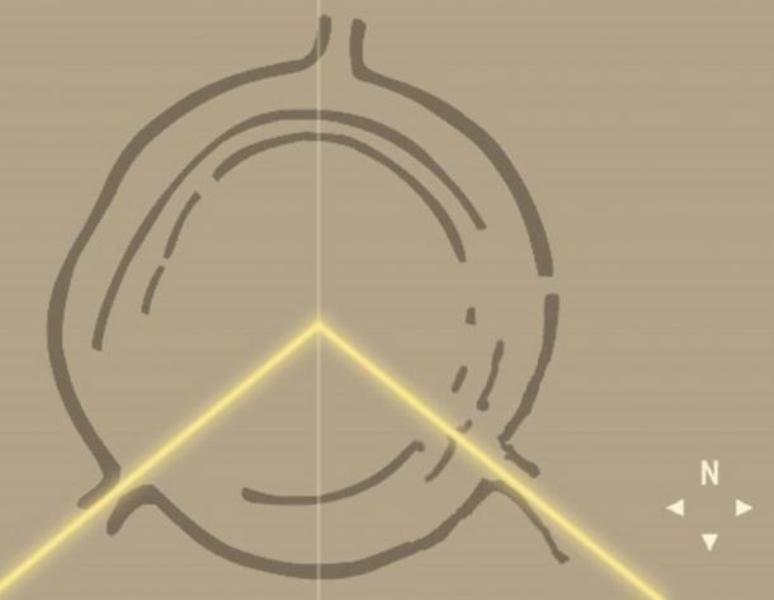
Goseck Circle in Germany, considered as the oldest Neolithic central enclosure, was created around 4900 BC and was used up until 4700 BC. The strange structure was discovered in 1991, when the inspectors from the German government were busy in taking aerial photographs of Goseck, a small German town, located on the north bank of the Saale River, about halfway between Naumburg and Weissenfels. From the sky above, they noticed a field of wheat, dotted with circular rows of wooden posts. It appeared to them like a giant circular ridge hidden beneath a field.
Initially, the concerned archaeologists considered it as an ancient fortification. However, after excavation and prolonged study for twelve years, the archaeologists came to the conclusion that ridge was the remains of an ancient solar observatory, which the prehistoric people used for religious reasons and to track the movements of the celestial world. It was estimated from the various pottery shards, excavated from the site that the site was functional for a period of 200 years and then abandoned.

The traces of the original Goseck Circle revealed that the site was approximately 246 feet (75 m)) in diameter and the structure once consisted of two wooden fences, one mound and four concentric circles. Encircled by a narrow ditch, the circular wooden wall was built with three gates, facing north, southwest and southeast, which were equally spaced around the outer edge. During the winter solstice, the sun rises from the southeast gate on December 21 and set through the southwest gate. As the entrances get progressively smaller, they act as inbuilt machinery to concentrate the rays of the sun to travel through a narrow path. The implication of the third gate is still unknown, but it specifically points north.

However, the north gate may not be an essential part to track the movements of the celestial world, but the compound as a whole is believed to be more than just a solar station. It is claimed by many that the Neolithic farmers used the earthen circle as a calendar that alerted them in advance to begin counting the days until spring planting.
The extensive excavation site of 6,000 square-meter have also revealed bovine and human skulls, headless skeletons and bones, decapitated oxen and the remnant of ritual fires, which strongly suggests that the circle was not built just for star gazing, it was also a place for ritualistic burials or sacrifice.

Excavated in the early 2000s, the Goseck Circle was subsequently reconstructed with new wooden stakes erected to form a strong fence that marks the shape of the original structure. Two rows of wooden stakes encircle the ditch, with different gates marking a number of entrances into the circle’s centre. The reconstructed ancient observatory was opened on the winter solstice, 21 December 2005, with great fanfare, which included a spectacular display of fireworks.